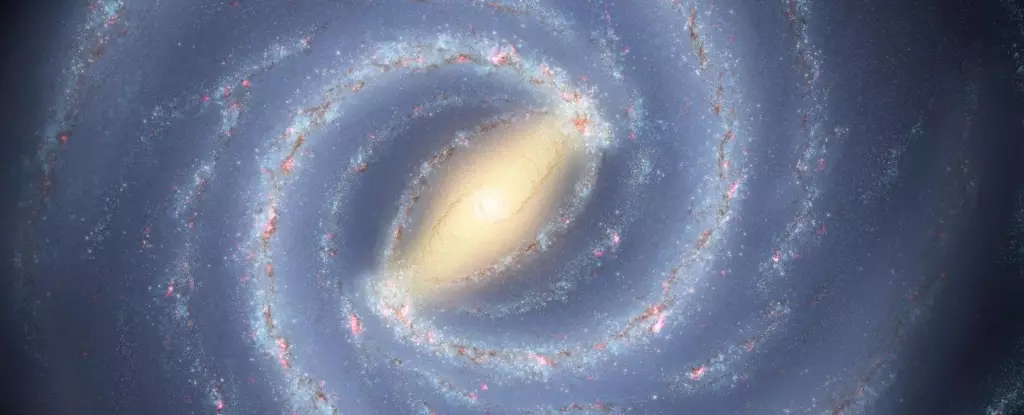The Milky Way, our home galaxy, offers astronomers a unique vantage point for studying the formation and evolution of galaxies. Because Earth resides within this grand structure, researchers are equipped with advanced technology to analyze the galaxy’s characteristics more deeply than what can be achieved with distant galaxies. By observing the Milky Way in various wavelengths, scientists gain insights into its stellar population, gas dynamics, and myriad other attributes. However, recent studies leveraging data from the Satellites Around Galactic Analogs (SAGA) survey reveal that the Milky Way may not be as typical as once thought, prompting a re-evaluation of how galaxies are compared and understood.
A crucial method in scientific research is the principle of comparative analysis. This technique, often employed in academic settings, facilitates a deeper understanding of subjects by contrasting them with similar entities. Astronomical surveys, including the Sloan Digital Sky Survey (SDSS), the Two Micron All Sky Survey (2MASS), and the ESA’s Gaia mission, have been pivotal in providing the foundational data necessary for such comparisons. The SAGA survey stands out as an ambitious endeavor aimed at unveiling the mysteries surrounding dark matter and its influence on galaxy formation.
By focusing on 101 galaxies that are similar in mass to the Milky Way, SAGA enables a detailed exploration of the variations and commonalities in galaxy formation processes. This extensive database allows researchers to analyze how galaxies develop within dark matter haloes—massive, unseen structures that hold most of the universe’s matter. Comprising around 85% of the universe’s mass, dark matter exerts a gravitational influence that drives the formation of galaxies, thereby playing a crucial role in shaping their evolution.
One of the critical revelations from the SAGA data is the discovery of numerous satellite galaxies that orbit the Milky Way-mass galaxies. SAGA’s third data release cataloged these satellites, revealing that the number of satellites per galaxy can vary widely—from none to as many as thirteen. This variance is particularly notable when considering that our Milky Way has only a few well-known satellites, namely the Large and Small Magellanic Clouds. Understanding this diversity is essential, as Risa Wechsler, a key figure in the research and professor of physics, asserts, “the Milky Way only represents a single data point among many.”
The analysis further indicates significant differences in galaxy characteristics between the Milky Way and the surveyed galaxies. The researchers found that one-third of the systems contain significant satellite masses, suggesting that other Milky Way-like galaxies may have a more complex and active satellite population, challenging the notion that our galaxy is a representative example of typical galaxy behavior.
Star Formation Discrepancies: A Puzzle of Activity
The SAGA survey also delves into the realms of star formation within satellite galaxies. By measuring star formation rates (SFR), researchers observed that while star formation remains active in many of these satellites, proximity to the host galaxy seems to negatively affect their activity. This discovery raises intriguing questions about the Milky Way’s influence on its satellite galaxies. In particular, the research suggests that satellites closer to the Milky Way experience a “quenching” effect on star formation, potentially owing to the gravitational pull from the Milky Way’s dark matter halo.
Interestingly, the Milky Way’s satellites, especially the Magellanic Clouds, are exceptions in this regard; they continue to form stars while other smaller satellites show a decline in activity. Wechsler articulates this anomaly well: “What in the Milky Way caused these small, lower-mass satellites to have their star formation quenched?” This question speaks volumes about the unique characteristics of the Milky Way itself.
Lessons Beyond the Milky Way: The Importance of Broadening Perspectives
Ultimately, SAGA’s findings underscore the importance of examining a broad spectrum of galaxies rather than relying solely on the Milky Way as a template for understanding galaxy formation. The insights gleaned from the similarities and differences identified within the 101 galaxies expand our perspective on galactic evolution, suggesting that lessons learned from the Milky Way may not universally apply.
Moreover, ongoing studies will employ computer simulations to compare observed satellite formations against theoretical models. This forward-looking approach will include exploring the subtle mechanics of dark matter at smaller scales and how it affects the satellites’ evolutionary trajectories. Spectroscopic surveys are anticipated to augment the SAGA dataset and answer lingering questions about internal galactic feedback mechanisms.
The work conducted by the SAGA survey offers a fresh lens through which to view not only our Milky Way but the universe at large. By challenging preconceived notions of what constitutes a typical galaxy, researchers are paving the way for a more nuanced understanding of cosmic evolution.


Leave a Reply